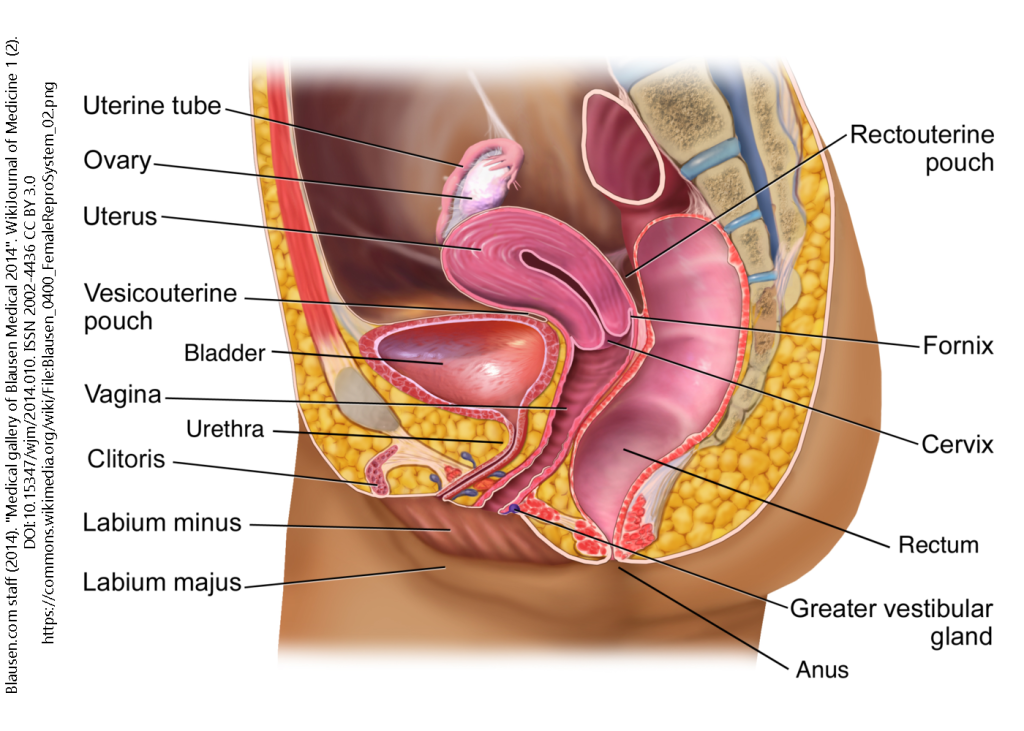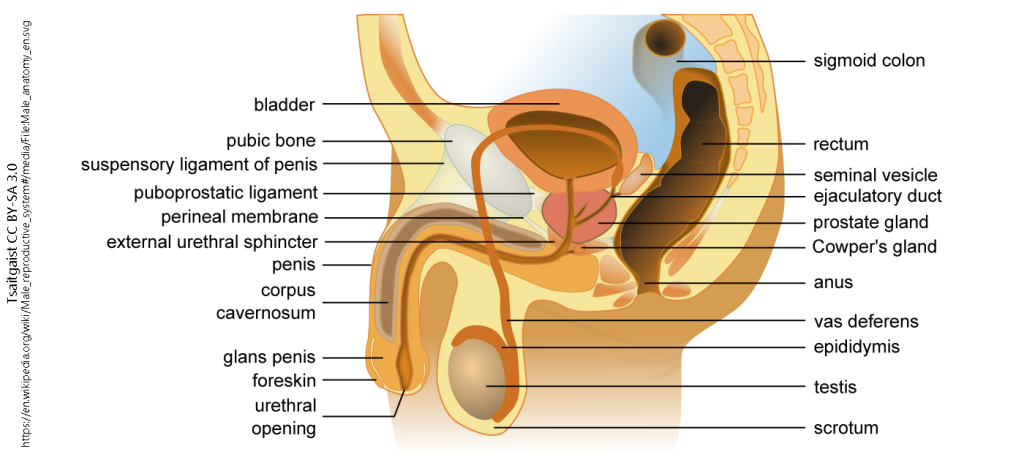The Reproductive System
Only [Med Terms] in the Building Episode 12
The Reproductive System is the only system in which you see major differences between male and female. All other body systems are virtually the same, anatomically and physiologically, between female and male (with the exception of a minor sex difference in the Urinary System). It is also the only system not necessary for the survival of an individual organism. Yes, it’s necessary for the survival of the species, but neither you nor I depend on our Reproductive System to survive as individuals. Every other body system is absolutely necessary for life.
Female Reproductive Organs
Fallopian Tubes: tunnels for egg cells to travel from the ovaries to the uterus, common site of fertilization
Uterus: also called the “womb”, site of implantation into the uterine lining, home to the developing fetus during pregnancy
Cervix: narrow canal at the lower part of the uterus that opens to the vagina
Vagina: also called the “birth canal”, joins the cervix to the outside of the body
Vulva: the external portion of the female genital organs
Prostate: produces fluid to contribute to the ejaculate that nourishes sperm and helps sperm move through the female reproductive system (double check)
Seminal Vesicles: produces fluid to contribute to the ejaculate that provides a source of energy for sperm
Scrotum: sac-like organs containing the testes, protect and provide climate control for the testes
Testes: responsible for testosterone and sperm production, also called testicles
Epididymis: transports and stores sperm produced in the testes, brings sperm to maturity
Vas Deferens: muscular tube transporting mature sperm from the epididymis to the urethra
Urethra: tube responsible for expelling semen (as well as carrying urine from the bladder to outside the body)
Penis: composed of erectile tissues (corpora cavernosum and corpus spongiosum), sperm is expelled through the urethral opening at the tip of the penis.

During sexual intercourse, when a male sperm penetrates the female egg, fertilization results, forming a zygote. This normally occurs at about 14 days after the last menstrual cycle, accounting for the difference between gestational age (used by most people and their doctors) and embryonic age (used in textbook descriptions of embryology). The image above shows the process as it occurs for dizygotic (fraternal) twins as well as monozygotic (identical) twins.
The zygote implants in the female’s uterine wall after about a week, resulting in an embryo. At about 1/4 of the way during development (10 weeks gestational age), the embryo is called a fetus.
Media Attributions
- Unit 12 figure 1 female reproductive anatomy
- Unit 12 figure 2 male reproductive system
- Identical twins


